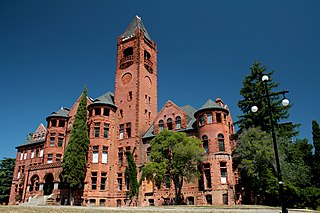Why Inspections Are Necessary

State law (Code of Regulations, Title 24, Building Standards Code) requires that every jurisdiction regulate building design and construction to assure that structural and utility systems are safe, healthy, accessible, efficient, sustainable, and preserve historical significance. The traditional way that jurisdictions accomplish this statutory mandate is with a Department of Building Safety (“Building Department”), which is charged with ensuring that new and existing buildings meet the legal requirements for human occupancy and habitation. Added to this obligation are federal and local regulations (flood hazard, waste reduction, land use, infrastructure, etc.) and other state codes (fire, elevator, public utilities, land subdivision, etc.), which must be individually satisfied and which have differing requirements.
Although independent inspection of permitted building construction is not required by the Building Standards Commission, it is required by the Department of Housing and Community Development for residential construction (CBC Matrix Adoption Table – Chapter 1). All jurisdictions, however, adopt and amend the California Building Code administrative regulations (e.g., section 110) in Chapter 1 as part of the statewide 3-year code adoption process. In addition, other state codes and local ordinances require independent inspections for life-safety systems, public infrastructure, land use conditions, etc. These inspection obligations may be accomplished by several entities:
- Employee of the jurisdiction
- Contracted vendor of the jurisdiction
- Employee of a utility or other jurisdiction
- Design professional of the property owner
- Contracted vendor of the property owner (approved “special inspector”)
While the CBC stipulates requisites and prerequisites for inspectors and inspections, the actual “who inspects” and “what needs inspection” is distinctive for each jurisdiction. State law requires that jurisdictions legislatively adopt their alternatives and enhancements to the CBC (“local amendments”) and file them with the Building Standards Commission in Sacramento.
Preparing for Your Inspections
Whether you are a contractor, a homeowner, or an agent, as the permit holder you are expected to know how to comply and to comply with code requirements and manufacturer installation instructions. While inspection staff will discuss construction alternatives, state law prohibits employees from designing the project for you. For example, while staff will readily advise you if a proposed design complies with code, they cannot advise you how to design it to comply with code.
In any case, preparing for inspections is a sequential process which requires time and focus to assure good results:
- Permit expiration parameters
- Whom you should contact for inspections
- Multiple inspectors for the same inspection
- Fees for (not) canceling inspections and re-inspections
- Jurisdiction holidays, limited-service days, shut-down days, and overtime options
- How far in advance inspections should be scheduled (e.g., day before, morning of)
- Scheduling methods (e.g., facsimile/ internet/ telephone, weekdays 9:00 am to 3:00 pm)
- The expected duration of an inspection
- How access to the work should be provided
- Who should be present during the inspection
- The expected arrival time of the inspector (e.g., confirm with the inspector on the morning of, any time during the day)
- What should be provided for the inspection (e.g., job card, prior deficiency lists, approved plans and revisions, installation instructions, special inspection reports)